Many different types of heating systems are used to control the temperature in our homes and to keep us more comfortable. The two most common are forced air and hot water, normally fueled by either natural gas or electricity. Other types of heating include heat pumps, baseboard radiant heat, space heaters, fireplaces, and wood burning stoves. Many of these are used to augment other heating sources.
HEAT DIFFERENCES
Different methods of heating each provide a unique heating experience. Forced-air systems can create a dry indoor climate, so humidifiers are often used to balance the indoor air moisture content. Hot-water systems can sometimes create hot and cold spots in a room. Fireplaces and wood burning stoves add atmosphere but are very inefficient. Under-floor electric heat is cost effective and even, but it is still not common in the US.
European style radiator
Radiators are made to operate as part of a closed-loop hot-water (hydronic) heating system. Hot water from a boiler is circulated through metal pipes to radiators placed in each room. The boiler heats water by burning home heating oil, natural gas, or LP gas.
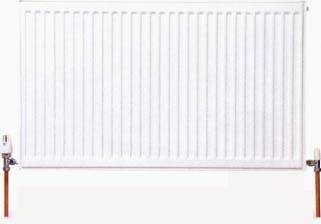
Above: European style radiator -- Metal radiator "grilles" radiate heat.
Air purifier
The air inside your home may have five times the contaminants of outdoor air. Inline air purifiers, which are a part of your central heating and cooling system, are often the best way to eliminate this problem. The initial cost can be high, but long-term usage costs are minimal. ( More info at dust-control.us)
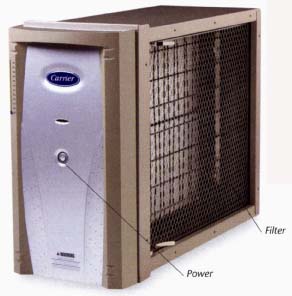
Baseboard heaters
Heat rises, which makes the baseboard an ideal location for passive heaters. Cool air flows in from the floor, is heated by an electric wire element or hot water coil, and exits though vents along the top edge of the unit, then flows throughout the room. Similar units, called toe-kick heaters, fit under the edge of a cabinet and can make a toasty addition to a drafty bathroom or kitchen. Gas supply port.
Furnace
A typical forced-air furnace is fueled by either gas or electricity and is controlled by a thermostat placed within the living area of the home. When the thermostat signals the furnace to begin heating the air, which is then blown or “forced” throughout the home through ductwork.
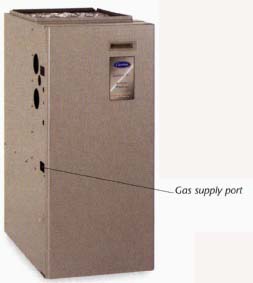
Control
A thermostat is used to control most central heating and cooling systems. The model shown is programmable to allow the climate control system to run only when specified, saving energy when occupants are away or sleeping.
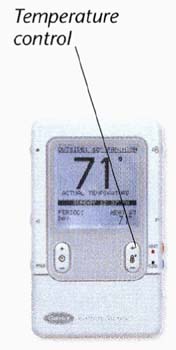
Hybrid heat
A heat pump is a reversible air conditioning unit that can pick up whatever heat is available outside and transfer it into the house. It often cannot deliver enough heat in winter, so strip heat might be necessary to augment it.
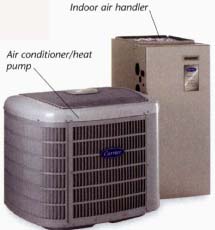
WORKING SAFETY
As with any work done around the house, there are rules to follow to be safe. Never work on any system that uses electricity until the electric circuit is turned off and verified as being off. Handle wiring as though it were hot just to be sure. Always wear eye protection when working with any hand or power tools. Wear gloves when working with anything that might cut or burn. Read all directions on product packaging and always use only as directed.
Previous: Heating Systems (Intro) | Next: Thermostats and Controls